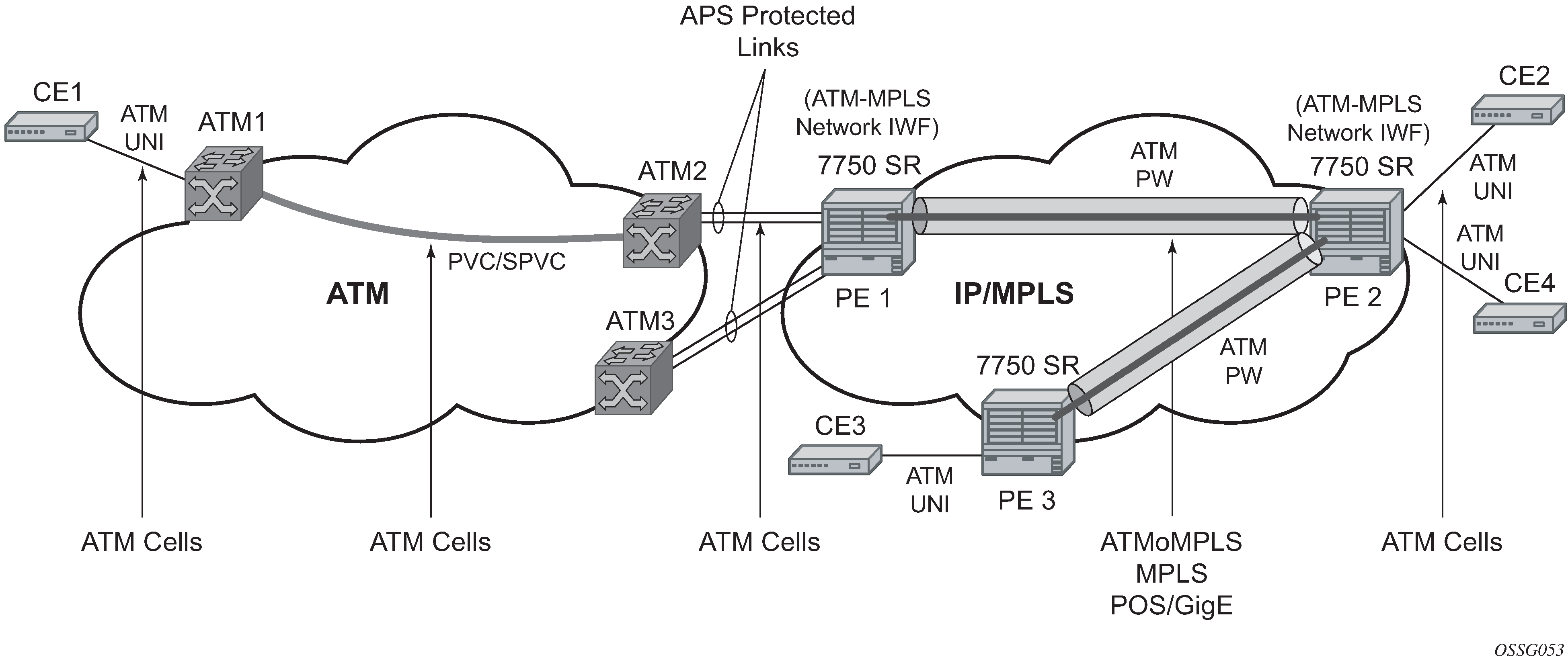An Apipe provides a point-to-point ATM service between users connected to 7450 ESS or 7750 SR nodes on an IP/MPLS network. Users are either directly connected to a PE or through an ATM access network. In both cases, an ATM PVC (for example, a virtual channel (VC) or a virtual path (VP)) is configured on the PE. This feature supports local cross-connecting when users are attached to the same PE node. VPI/VCI translation is supported in the Apipe.
PE1, PE2, and PE3 receive standard UNI/NNI cells on the ATM Service Access Point (SAP) that are then encapsulated into a pseudowire packet using the N:1 cell mode encapsulation or AAL5 SDU mode encapsulation according to RFC 4717, Encapsulation Methods for Transport of ATM Over MPLS Networks. When using N:1 cell mode encapsulation, cell concatenation into a pseudowire packet is supported. In this application, both VC- and VP-level connections are supported.
The ATM pseudowire is initiated using Targeted LDP (T-LDP) signaling as specified in RFC 4447, Pseudo-wire Setup and Maintenance using LDP. The SDP can be an MPLS or a GRE type.
Figure 1 shows an example of Apipe for end-to-end ATM service.
